One of the most stressful things when it comes to travelling with dogs is flying, especially taking a flight for the first time. For your dog, it’s likely to be a very new and potentially scary experience, whether they fly in the cabin, in the hold or as cargo. Plus it’s not always that easy to organise.
After flying multiple times with my dog, both in the cabin and as cargo, including in Europe, the United States, Australia and on long-haul international flights, I’ve learn quite a bit about flying with a dog. To help you out, these are my top tips for flying with a dog.
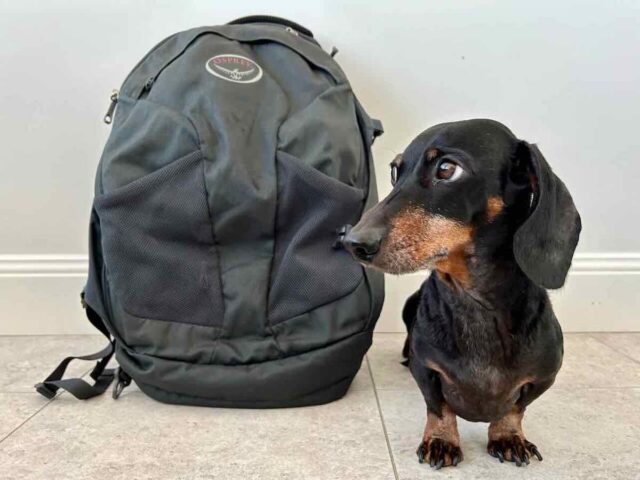
Tips for Researching Flights
One of the most difficult things about flying with your dog for the first time is researching the options available. There are a lot of rules when it comes to flying with pets!
For starters, not all airlines allow pets on board, plus there are multiple ways that pets can fly, depending on their size and the destination, from in the cabin to in the hold.
To find out more information about the options available for flying with pets, check out my complete guide to flying with a dog. But in particular, these are my top tips to keep in mind when researching the options available when flying with your dog for the first time.
#1 Always Check the Airline’s Website
There are plenty of websites out there that provide information about the options available for flying with your pet, including this site. However, always double check the latest and complete rules for flying with pets on the airline’s own website.
Sometimes the rules for pets can change, either dramatically (such as weight limit changes or not accepting bookings for pets in cargo) or in more subtle ways (the requirements for carriers). The airline’s website will always have the latest rules and is the best authoritative source.
#2 Check For Specific Flight Rules
The general rules for flying with a pet on a specific airline may vary from route to route. In particular, there are often some destinations that you can’t fly to with your pet in the cabin (only as cargo). Furthermore, sometimes the aircraft used on specific rules have different constraints (such as different maximum sized kennels that can fit in the hold).
Look out for any such rules, that may apply to the route that you’re planning to fly, so that you don’t start making plans for something that is not an option.
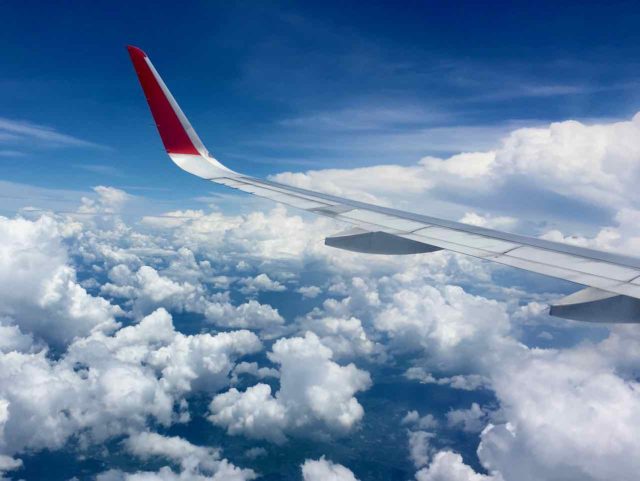
#3 Check For Specific Dog Rules
There are additional restrictions for flying specific breeds of dogs. Many airlines don’t fly brachycephalic or short-nosed breeds, such as pugs, or have additional requirements. (And you should always visit your vet for their guidance before considering flying a short-nosed dog.)
Other airlines may have restrictions or additional kennel requirements for dangerous breeds of dogs. For instance, Air France restricts the transport of certain breeds.
The rules and exact listing of dogs vary between different airlines. So if your dog might be affected by these rules, double check for the airlines on your shortlist.
#4 One Long Flight or a Stopover?
One of the biggest concerns all dog owners have when flying their dogs is the duration of the flight and whether their dog can handle it. A natural question is whether you should break up the flight with a stopover, or just book one long flight?
When flying my dog from Greece to New York City, we ended up breaking up the journey into two flights, with an overnight stop in Paris in between. This was partially as there were no direct flights available (at least at a reasonable price). However, on the second leg this was the only time that my dog grumbled at flying in the cabin.
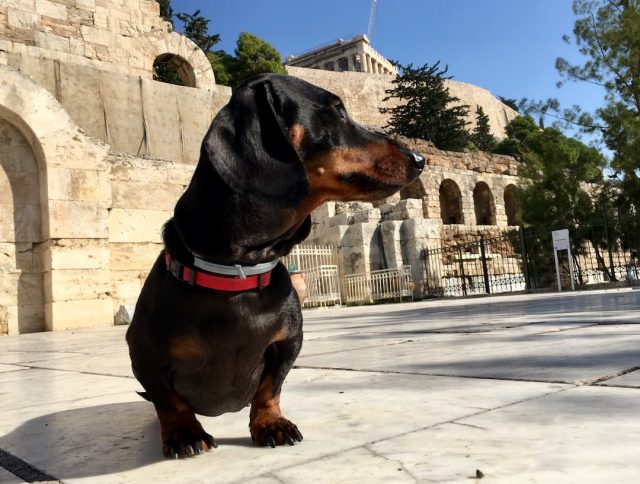
Unless a single flight would be very long, these days I recommend considering just one flight. If booking two flights, there is the risk of missing the second flight if your first flight is delayed. Plus if your dog is flying in the hold, a long stopover is necessary to ensure they make it onto the second flight, and facilities during the stopover will vary.
If you do get stuck at your stopover airport, unless you have the paperwork for your pet to enter the country, you may stuck inside the airport, not even able to go outside to allow your dog to toilet on the grass.
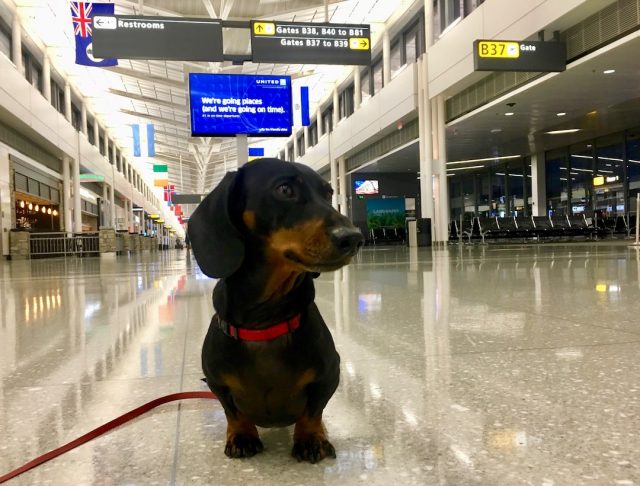
Plus, as I mentioned above, your dog that is normally fine with flying may not be happy at being stuck on a flight for the second time in a row!
#5 Consider the Time of Day
Carefully consider what time of day will be best for your dog to fly, even if it wouldn’t be your preferred choice if you were flying alone.
For longer flights, my recommendation is to choose a nighttime flight. This way your dog can sleep during the flight, whether they’re in a carrier bag in the cabin or flying in the hold. They’re less likely to be restless if they fly at a time they would normally be sleeping.
Also take into account the likely temperatures at your departure and arrival airport. In some parts of the world, there are restrictions for pets flying during summer, such as an embargo. Even if temperatures are not extreme, try to time for flight for the early morning or evening. See my tips for flying with a dog in summer.
Tips for Booking Flights
Once you’ve researched your flight options and make a choice for the best flight for you and your dog, it’s time to book the flight, both for yourself and your dog.
#1 Find Out How to Book Your Dog’s Flight
It’s quite straightforward to book your own flight ticket. However, when it comes to booking a flight for your dog (or cat), there are multiple ways to do this, depending on the airline, and it can be far from straightforward.
The easiest way (and my favourite!) is when you can book your pet’s flight as part of your own ticket, as easy as adding extra luggage or a set of golf club. A growing number of airlines offer this option.
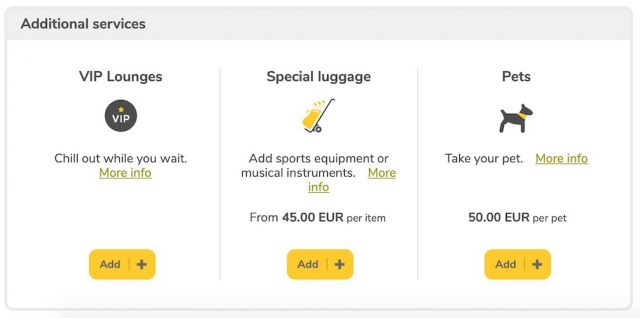
However, for many other airlines, the only way that you can book your dog’s ticket is by calling up the call centre. Complicating the booking is that only a limited number of pets are allowed to fly in the cabin on most flights.
#2 Don’t Book a Nonrefundable Flight First
If you need to book your pet’s flight by calling up a call centre, don’t firstly book your own ticket online, unless it’s refundable. As well as double checking that your pet is actually permitted on the flight (in case you’ve overlooked some restrictions or embargoes), most flights limit the number of pets on a flight and they may already be at capacity.
#3 Check Your Dog Can Be Booked First
Before booking your own ticket, if your pet can only be booked through a cell centre, first check that your dog can be booked onto the flight. Complicating things is that you generally need a ticket booked before you can add a pet onto your ticket.
I’ve usually followed this process:
- Start booking my own ticket online, but stop before making the final purchase
- Call up the call centre and check there is capacity for my pet on the flight
- If my session hasn’t timed out, purchase my ticket, while still on the phone. Alternatively, hang up, purchase my ticket, then call back.
- Ask the call centre to add my pet to my own ticket.
If there’s a long wait period for the call centre, it can be quite time consuming!
#4 Check When You Need to Pay
Another thing that varies from airline to airline is when you need to pay for your pet’s ticket. In many cases, I’ve paid in advance for my pet, either when adding a pet to my booking online or when on the phone to the call centre. This is particularly common in Europe.
With other airlines, you don’t need to pay for your pet until you arrive at the check-in counter on the day of your flight. I believe this happened when I flew my pet in the United States. With some airlines, there is the option for either payment in advance or on the day, with a discount for advance payment.
Preparing a Carrier or Crate
One of the most important aspects of flying with a pet is the carrier or crate that they fly in. If you haven’t flown previously, you’ll need to consider this as part of the preparation process, as the limits for pets flying in the cabin or in the hold depend on the size and weight of your pet in their carrier, not just the actual animal.
#1 Check for Airline’s Measurements in Cabin
If your dog is small, it may be possible for them to fly in the cabin. Every airline that allows pets in the cabins has their own set of maximum measurements for pet carriers, so that the carrier can fit underneath the seat in front of you.
Double check the airline’s carrier and try to find a carrier that fits their guidelines, but also fits your pet. Most airlines will specify that the carrier must be large enough for your pet to “stand up, turn around and lie down safely and comfortably, with no part of them extending outside the carrier” or similar.
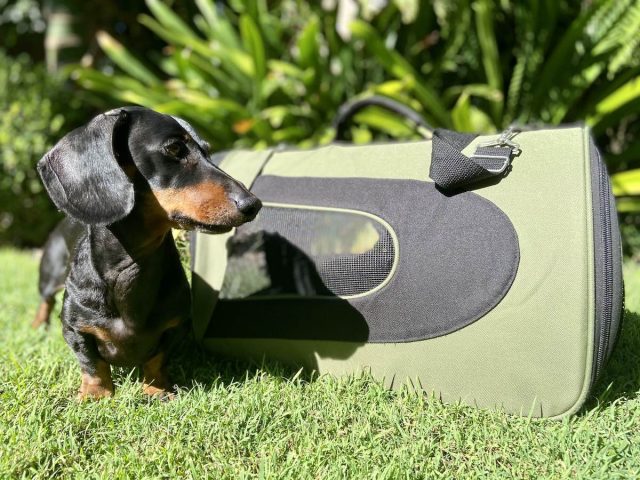
Often the maximum height of carriers is specified to be quite small. However, as long as you have a soft carrier, most airlines don’t actually check your carrier conforms, as they can be squashed down. Some airlines specify a different maximum height for hard or soft carriers.
Find out more tips about choosing a carrier for your pet to fly in the cabin.
#2 Check IATA Guidelines for in Hold
If your dog is larger and will be flying in the hold, the crates used in the hold are quite different: large and sturdy rather than small and soft.
The guidelines for dog crates in the hold are specified by IATA, the International Air Transport Association, although some airlines might have some extra requirements. The IATA website is a good place to start your research.
In particular, find out the minimum size crate that will be suitable for your pet based on their dimensions – this is used by all airlines. The calculations are on the above page. Additionally, it’s a good idea to test your dog in the recommended size crate before buying it, to double check it is adequate.
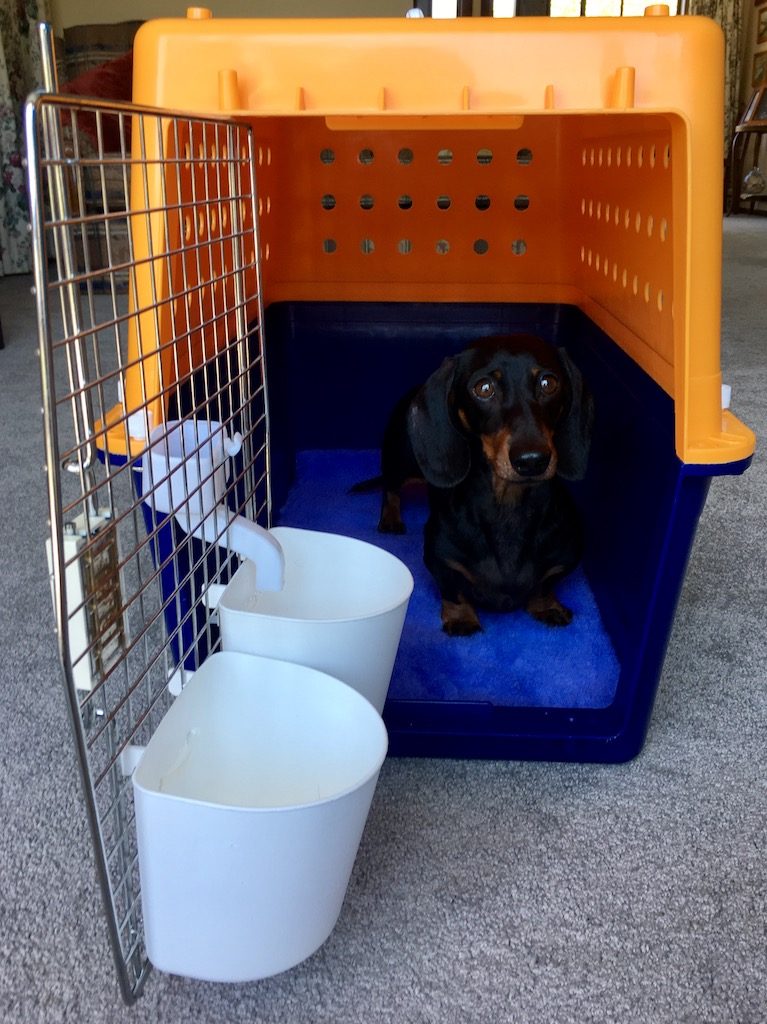
#3 Check for Specific Airline Rules
Take note of the extra requirements for soft carriers in the cabin or hard crates in the hold specified by the airline. When it comes to extra things like water, labelling and similar, some of the requirements differ from airline to airline.
For soft carriers, a recent rule I’ve heard about recently is a requirement for carrier bags to have mesh on all four sides, something that many airline carrier bags don’t have. Check whether your airline enforces this.
#4 Allow Your Dog to Familiarise Themselves
The best way to ensure that your dog is comfortable in their carrier or crate on the flight is to buy it well in advance and allow them to familiarise themselves with it.
You’ll be a step ahead if your pet is already crate trained, so they are used to feeling safe in a confined space, but even if this is the case, still familiarise them with what they’ll actually be travelling in.
Encourage your dog to eat inside the crate and sleep in it. If they’re food motivated, reward them with plenty of treats, or put their toys in the crate. Don’t ever use it as a place of punishment.
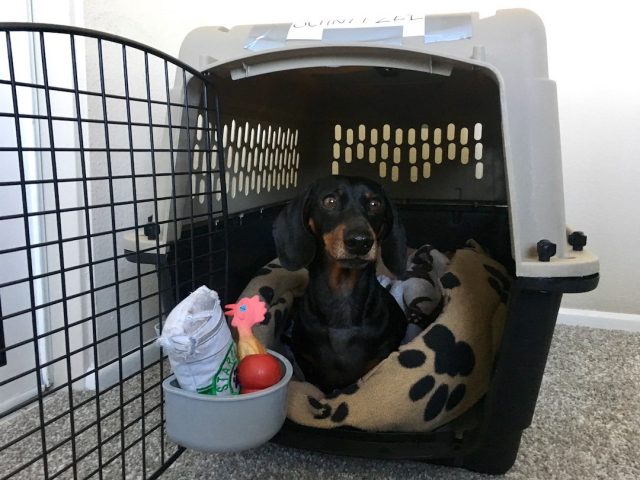
#5 Pack an Old Shirt
When my dog has flown in the hold, as well as making sure he’s familiar with his crate in advance, I’ve also added one of our old shirts or something similar to the crate so that he’s surrounded by similar smells. Just don’t pack something that you want to wear again, as it may become soiled during a long flight!
Day of the Flight
So, you’ve booked your pet on their flight and their carrier or crate is ready to go. There’s plenty of things to keep in mind on the day of your flight to make everything go as smooth as possible.
#1 Restrict Food Intake
Just before a flight is not an ideal time to feed your dog. Try to not feed them for at least a few hours before the flight, so they don’t feel the need to go mid-flight.
This will be easiest if your flight is short and not at a time of the day that they are usually fed. If in doubt, it’s better to cut back on your dog’s food and leave them hungry, then cause a mid-flight accident.
Also discourage your dog from having big drinks shortly before the flight. Encourage them to sip instead, before and during the flight.
#2 Exercise Your Dog
During the flight, it’s best if your dog is calm and happy to snooze for most of the journey. Take them for a long walk or enjoy some time at an off-leash park with them before the flight. You could even take them for an extra walk in between check-in and passing through security, depending on the airport.
At the same time, try to minimise naps on the day of the flight. Ideally, they’re ready for a nap on the flight, not fully rested and energetic!
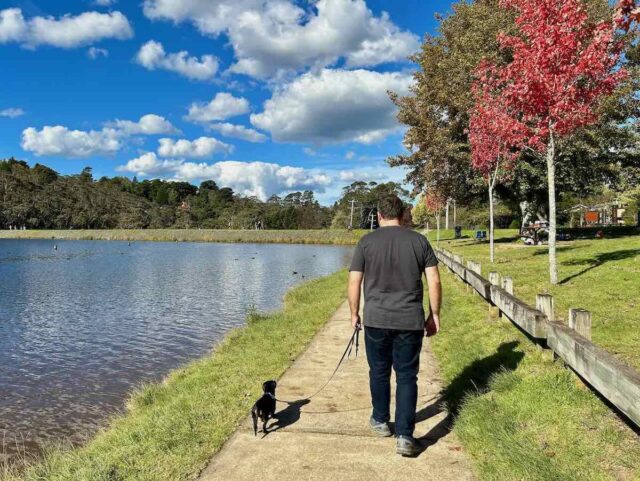
#3 Allow Plenty of Time
Catching a flight with your pet is one time you don’t want to arrive at the airport as late as possible and just make your flight! This applies regardless of whether your pet is flying in the cabin or the hold. (If flying in cargo, you’ll probably need to drop off your pet separately at the cargo facility, well before the flight.)
Some airlines specify an amount of time in advance that you should arrive at the airport with your pet. Even if your airline doesn’t specify anything, allow plenty of time to go through check-in and have your pet’s paperwork checked. Some airlines have additional forms that you’ll need to fill in.
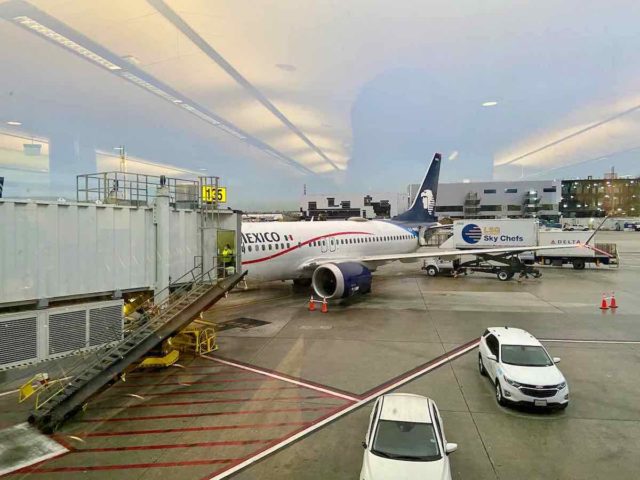
#4 Going Through Check-In
When flying with a pet, often you are not allowed to check in advance online, you’ll need to head to the check-in counter at the airport. This is so the airline staff can check your pet’s paperwork and their carrier or crate. You’ll also need to drop off your pet if they are flying as excess baggage in the hold.
The main place where your pet’s paperwork is checked as at check-in, not on arrival in a foreign country (although sometimes it’s also checked then). This is similar to when testing and vaccination restrictions applied due to Covid.
If flying with your pet in the cabin, often people are concerned about the carrier’s dimensions and the weight. In my experience, my pet has been weighed about half of the time inside his carrier. I’ve never had a check-in staff member check the dimensions of his carrier, despite it being slightly larger than the maximum specified by many of the airlines we’ve flown with.
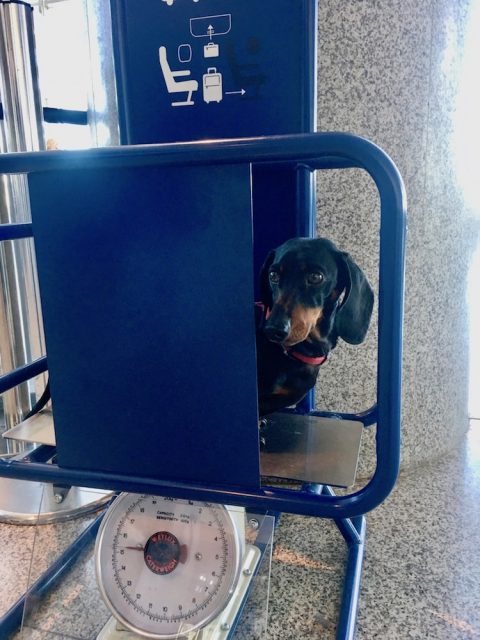
#5 Going Through Security
As well as allowing plenty of time to check-in with your pet, you also want to allow plenty of time to go through security. It’s tricky enough unpacking laptops and toiletries out of your carry-on bag without also dealing with your dog or cat who will be flying in the cabin.
The most important rule is never put your dog or cat through the x-ray machine in their carrier! You’ll need to take them out, take off their collar or harness if it contains metal, then carry them through. We’ve been lucky to have usually had friendly security staff who have helped out and doted on our dog.
I haven’t travelled with a cat, but I’ve also heard tham its sometimes possible to do the security check in a separate room. Ask if you think this will be helpful.
On the Flight
Despite the photos that you’ve seen on Instagram, when flying with your pet in the cabin, there are some rules that they’ll need to follow. No, they won’t be sitting on a window seat checking out the view outside!
#1 Follow the Airline’s Rules
In general, most airlines require your pet to stay in their carrier, placed underneath the seat in front of you (and taking up most of your foot space if you’re tall like me).
Some airlines are okay with placing your dog’s carrier on your lap during the flight, perhaps even unzipping it, but this varies from airline to airline. And this strictly isn’t permitted during take-off and landing, when everything needs to be packed away for safety reason.
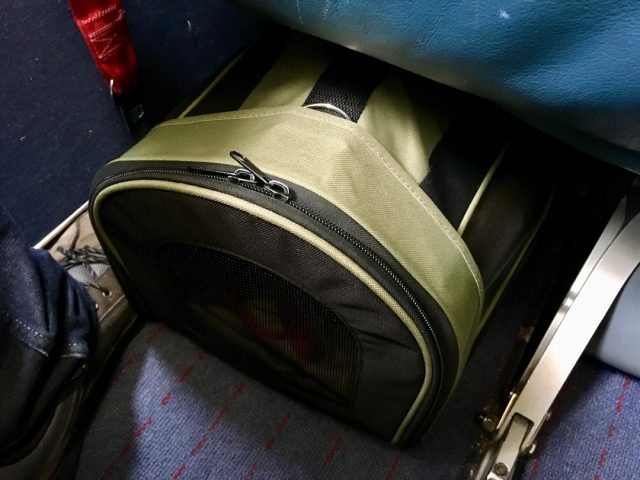
#2 Be Wary of Unzipping the Carrier
Most of the airlines that I’ve flown have required dogs to remain in their carrier (although one airline turned a blind eye when I took my dog out to comfort him when he wasn’t happy during boarding).
Sometimes I’ve slightly opened the zip to give my dog a pat or allow him to lick my fingers. But be warned that puppy noses have a way of pushing zips further open if they’re determined, so be wary if you don’t want to suddenly have a dog on the loose.
#3 Encourage Your Dog to Sleep
When flying with my dog, I’ve usually left him undisturbed in his carrier underneath the seat in front, and he’s spent most of the flight sleeping. After all, it’s relatively dark and quiet and snug, and most dogs spend a lot of time sleeping.
I’ve enjoyed peace and quiet during my flight, and when we’ve disembarked at the other end people are surprised to find out that there was a dog in a carrier on the flight.
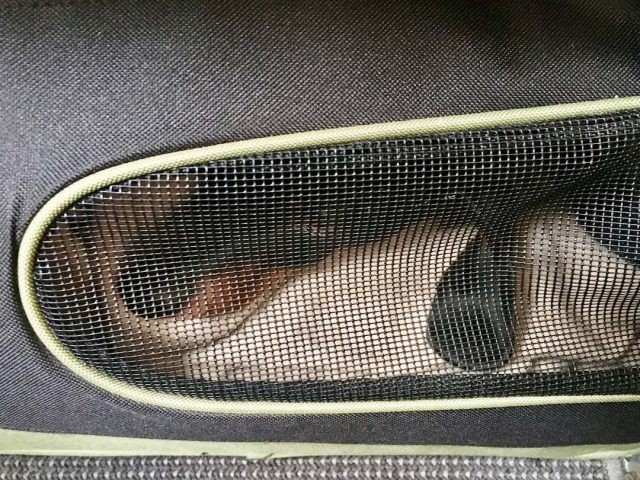
#4 What About Toilet Breaks?
Not surprisingly, one of the biggest concerns when flying with your dog, particularly in the cabin, is how they can manage to go to the toilet.
There are some fellow travellers that take their dogs to the plane bathrooms and put out pee pads on the floor to go, although many dogs aren’t trained to do this, or will refuse in such a confined space. (And I’ve come across one Russian airline that forbids dogs being removed from carriers also in the bathrooms!)
Luckily, most of the flights with my dog in the cabin have been relatively short. Prior to our longest flight, from Paris to New York, I made sure he toileted shortly before the flight, plus it helped that it was an evening flight and he slept most of the way. The lack of pet relief areas in European airports doesn’t help though.
Dogs are generally better at holding on for longer than your expect, especially if it’s in a strange environment such as a plane. Speaking to fellow travellers, they’ve never usually encountered their dog needing to toilet mid-flight. It’s also best to not allow them to have a large drink before the flight.
After Your Flight
So, you’ve successfully managed to fly with your dog, and you’ve disembarked at the other end and have picked up your dog if they were flying in the hold. But don’t forget a few final things…
#1 Are Customs Checks Required?
If you’re flying across international borders, your dog or cat may need to checked when you go through customs.
There are a few countries that require checks to be booked on arrival, such as in Malta for all arriving pets. In some European countries, checks are required for pets arriving from outside of the EU, such as when you fly into Ireland or Portugal. Double check the rules for your destination country.
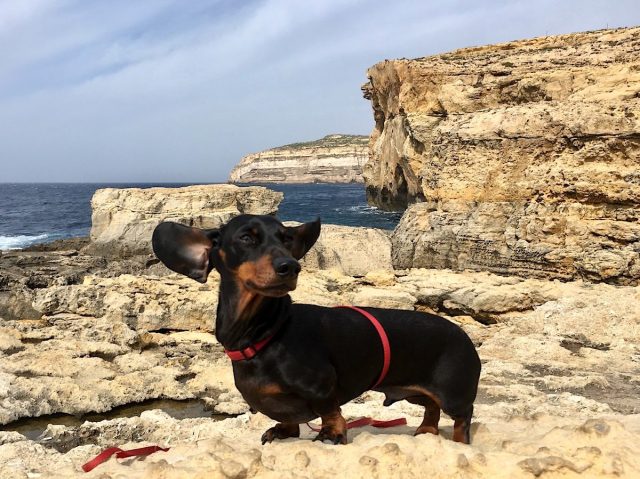
Many dog owners flying into Europe from the USA comment that no-one checks their pet’s paperwork on arrival, despite all the trouble securing a pet health certificate. This is partially as the paperwork is checked before your pet boards the flight. However, technically you should have the EU pet health certificate stamped on arrival, particularly if you’ll be using it to travel around the EU.
#2 Prioritise Pet Relief
Your first priority for your pet after the flight, other than customs, should be allowing them to toilet as soon as possible. Some airports have pet relief areas, including behind security, but often you’ll need to head outside the airport, especially in Europe, and find some grass.
I’ve sometimes tripped up here and focused instead on picking up our hire car or catching transport into the city. But your dog would be grateful if you forgot about that for a moment and just let them toilet somewhere after holding on during the flight!
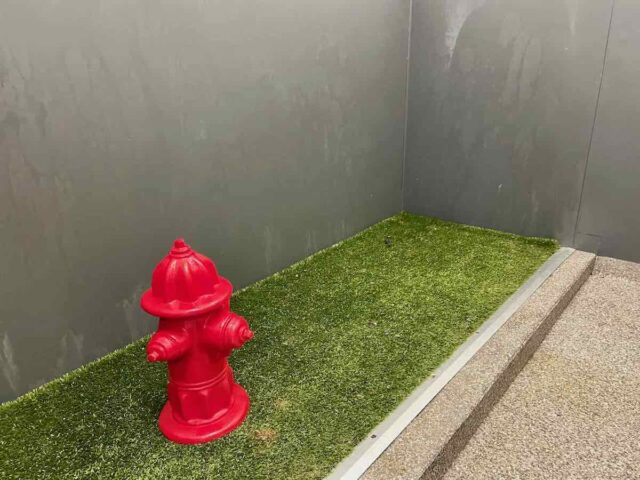
You May Also Like
- Ultimate Guide to Flying with a Dog
- Flying with a Pet in the Cabin in Europe
- What are the Most Pet-Friendly Airlines in the World?

Shandos Cleaver is the founder of Travelnuity: Dog-Friendly Travel. She has travelled extensively with her Miniature Dachshund, Schnitzel, including to 33 countries across Europe, every state and territory of Australia except Tasmania, and 10 of the United States. She’s passionate about providing inspiration and information to others wanting to travel with their dogs, whether close to home or internationally.
